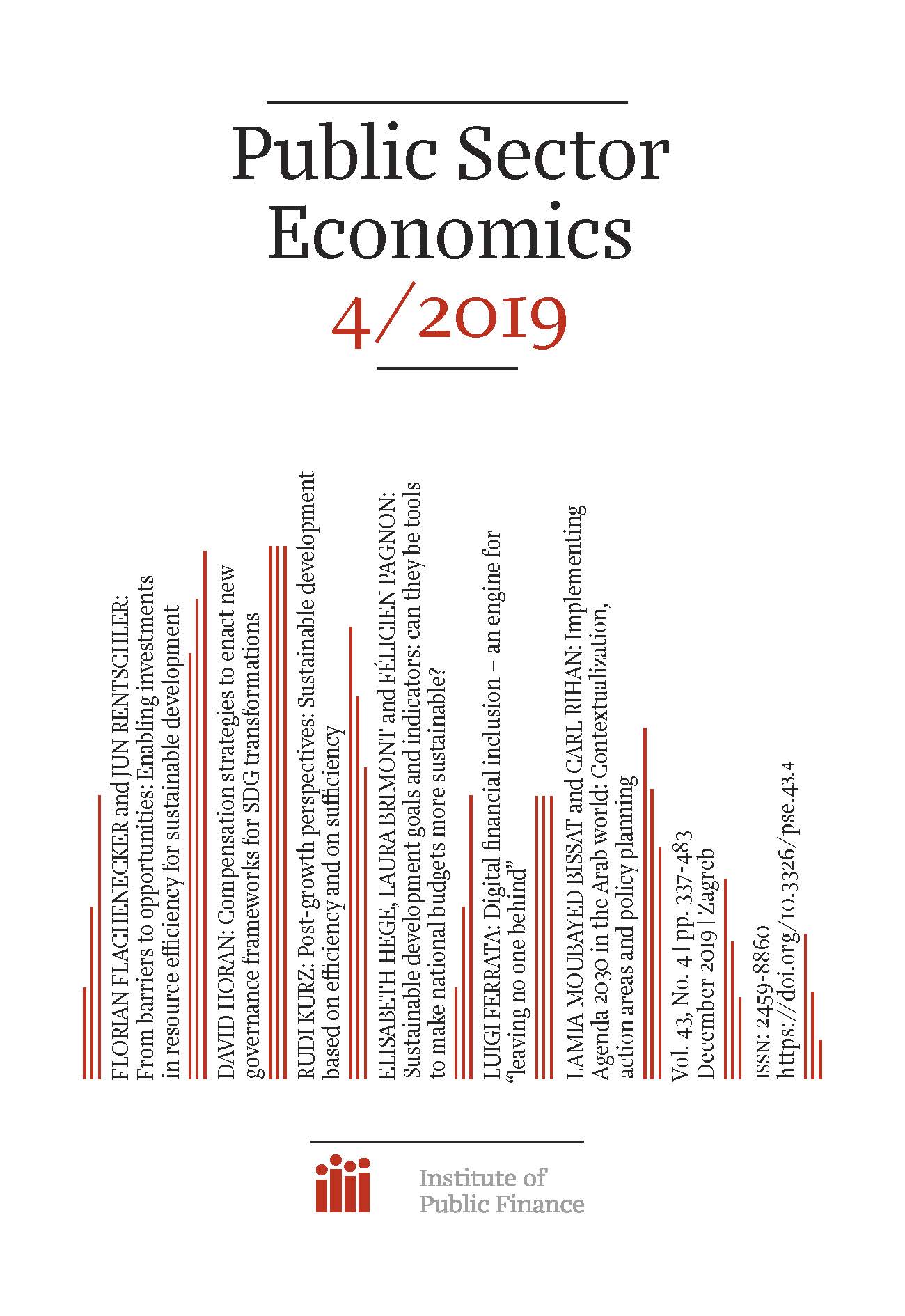Post-growth perspectives: Sustainable development based on efficiency and on sufficiency
Keywords:
delinking, GDP, green growth, happiness, IPAT equation, rebound effect, secular stagnation, transformationAbstract
With the United Nations Sustainable Development Goals (SDGs) and the Paris Agreement the general idea of sustainable development has been transformed into a policy concept with well-defined goals, indicators for measurement and an implementation process. To reduce environmental impact (e.g. on climate, SDG 13) two basic options are available: efficiency and sufficiency. Eco-efficiency (less environmental impact per unit of GDP) still plays the most important role and has the potential to delink economic growth and environmental impact. Growth could continue (green growth). However, rates of efficiency increase are not (yet) large enough to comply with e.g. climate goals – and efficiency increase is (partly) compensated by rebound effects. Therefore, greater emphasis on the sufficiency option (lower GDP) is necessary, i.e. consumption patterns and lifestyles will have to change; in macro-economic terms: economic growth (in rich countries) will have to end. This has significant consequences for the transformation of economies and societies and for government policies, which have been dominated by growth policy. Nevertheless, given the ambitious environmental (climate) goals and the only small effects of efficiency strategies, strengthening of the sufficiency option is inevitable. Only with policy concepts that integrate the efficiency and sufficiency components is there a chance to fulfill environmental SDGs – which are the foundation for many other SDGs.
Additional Files
Published
How to Cite
Issue
Section
License
Copyright (c) 2019 Rudi Kurz

This work is licensed under a Creative Commons Attribution-NonCommercial 4.0 International License.









